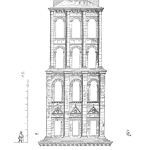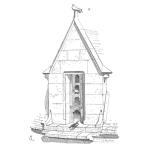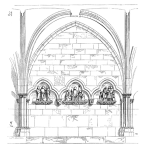
A friend of mine, Dr. Ben Thomas, recently forwarded me a video showing a man escaping incident in matter of seconds.
[Read more…]Your Reliability Engineering Professional Development Site
Find all articles across all article series listed in reverse chronological order.
by Sanjeev Saraf Leave a Comment

A friend of mine, Dr. Ben Thomas, recently forwarded me a video showing a man escaping incident in matter of seconds.
[Read more…]by Greg Hutchins Leave a Comment

In Part 1 of this series, we looked at the two relevant dimensions for decision-making under certainty, risk, and uncertainty that form the certainty-uncertainty spectrum are:
Based on these two dimensions, in this Part2, we will be looking at the three conditions along the certainty-uncertainty spectrum that you will face when making decisions under certainty, risk, and uncertainty.
[Read more…]by Mike Sondalini Leave a Comment

An Executive Report for CEO’s, Executives, and Senior managers in industry and manufacturing.
Utmost operating profits, lowest maintenance costs, world class reliability, & outstandingly effective physical asset management the Plant Wellness Way
Let a Plant Wellness Way EAM System-of-Reliability halve your Annual Maintenance Costs
In the Plant Wellness Way (PWW) you do nothing to your business until you have total confidence that what you do, and how it will be done, will be extraordinarily successful.
[Read more…]
My first task at Apple Computer was to recommend the warranty duration for the Apple II computer. Apple didn’t have a warranty! So, I looked at competitors’ warranties and recommended the same, one year. I wish I had known Apple’s computers’ and service parts’ reliabilities before that recommendation; I would have used actuarial forecasts of warranty returns to compare alternative warranties. Apple’s hardware warranty is still one year. Is that equitable to Apple, its customers, and society?
[Read more…]by George Williams Leave a Comment

Self-leadership is the constant step of focusing on forward motion, and taking out your compass to make sure you’re always still heading north. Constant action in the wrong direction can be just as harmful as standing still, sometimes worse.
This is a constant three step process. As your journey keeps moving forward, you need to keep checking your sails to make sure the wind is moving you in any direction: this is self-leadership.
[Read more…]by Sanjeev Saraf Leave a Comment

Surprisingly, many organization and professionals believe that safety can be achieved by common sense. Here is an excellent article from Kevin Jones’ Safety at Work blog about common sense and safety:
[Read more…]by Bryan Christiansen Leave a Comment
Organizations can face a wide range of failure problems, ranging from technical to process failures. These common failures include equipment breakdowns, product failure, quality issues, and environmental incidents. These failures typically require a more systematic approach. This involves failure tracking and corrective measures implementation — in comes the FRACAS methodology.
The FRACAS process tracks and manages failures and problems in products or systems. Almost every industry uses this approach. The goal of FRACAS is to uncover the cause of errors and take corrective action to avoid similar occurrences in the future. The process of FRACAS involves failure documentation, conducting failure examination, corrective measures implementation, and continually seeking ways to enhance the process. [Read more…]
by Fred Schenkelberg 1 Comment

Once word got out that I was taking graduate-level courses in statistics, I dreaded the knock on the door. Colleagues, some of which I knew and others from some far reach of the company, would ask if I could take a look at their data. I didn’t learn the necessary first steps with a stack of data in class.
I’ve lost count of the number of data sets I’ve reviewed and analyzed. I know there are important considerations and questions before creating the first plot. Let’s review the essential first steps you should take when presented with data.
[Read more…]
A facilitator leads a group of participants to solutions that are created, understood, and accepted by all. Effective facilitation cannot be achieved without the role of people and social sciences. Understanding Likert scales as a viable technique is necessary to improve qualitative assessments, including risk assessments, condition assessments, and prioritization.
Likert scales were originally developed by Rensis Likert, who was concerned with measuring psychological attitudes and wished to do this in a “scientific” way. Specifically, he sought a method to produce attitude measures that could reasonably be interpreted as measurements on a proper metric scale, such as a thermometer.
[Read more…]by Christopher Jackson Leave a Comment

I was recently asked by a product design engineer why their organization struggles with reliability even though they have a very ‘robust’ design process that seemingly has lots of different ‘good’ reliability engineering activities embedded in it. And when I say ‘good’ reliability engineering activities, I mean activities that have (in the past) shown to have a really good impact on reliability.
When I looked at some of this engineer’s processes as summarized by a ‘process flow chart,’ the reason his organization struggled with making reliable products was quite obvious.
The process was so complex that it became the ‘product.’
by James Reyes-Picknell Leave a Comment

Do you have a PHB, “Pointy haired boss”? If you’ve seen any Dilbert comics, then you know who I mean. Dilbert is an engineer too. The PHB is oblivious to the reality around him, only interested in how things look, and impossible to get to with Dilbert’s good ideas.
The comic is popular, especially among engineers, for a good reason. Scott Adams (Dilbert’s creator) knew that the technical world is full of frustration because of the relationship that engineers have with their own PHBs. Technicians, supervisors, superintendents, and managers in maintenance and reliability almost always have technical backgrounds. I’d hazard to say that we’ve all had PHBs at some point.
[Read more…]by Greg Hutchins Leave a Comment

Two schedule tools are widely used for the Integrated Master Schedule (IMS) around the world to manage projects. The first one is Microsoft Project (MS Project). The second one is Primavera P6. They are both very good. Primavera P6 is an Oracle product originally designed for the construction industry. MS Project is simpler and easier to learn based on my experience. It also costs less than Primavera P6. DOD uses MS Project and typically requires it for use on government contracts. Other industries use one or the other depending on the size and complexity of the project.
[Read more…]by Mike Sondalini Leave a Comment

When To Use Stainless And Alloy Steel In Place Of Plastic Or Carbon Steel. There are many times when it is false economy to use carbon steel and plastic items. It is often better to use stainless and alloy steels instead. They last longer and deliver a lower life cycle cost.
[Read more…]by Ray Harkins Leave a Comment

Reliability engineers and quality engineers both work to ensure that products and systems are functioning effectively and efficiently. However, they have slightly different focus areas and goals.
The primary focus of reliability engineering is designing systems that are dependable and able to function consistently over time. This may involve identifying and addressing potential sources of failure, implementing preventive maintenance protocols, and conducting testing to ensure that the system is functioning as intended. The ultimate goal of reliability engineering is to minimize downtime and ensure that the system is available for use when needed.
[Read more…]by Sanjeev Saraf Leave a Comment

Recently, Erik, a reader of this blog directed me to a video his firm has created that explains the role of trees leading to the Buncefield explosion.
Remember the Buncefield incident occurred in oil storage and transport depot. Thus the fuel involved was liquid hydrocarbon. The most probable outcome of a liquid hydrocarbon release is a fire…so it is conceivable that other circumstances such as amount and duration of release and the semi-confinement provided by surroundings may have lead to flame acceleration and increased explosion overpressures.
[Read more…]